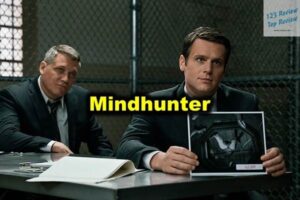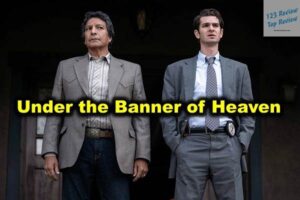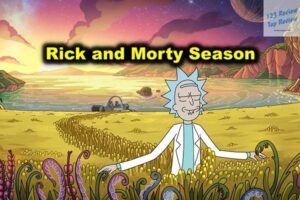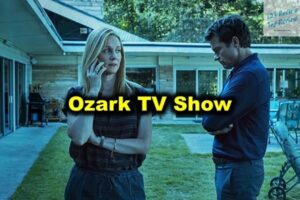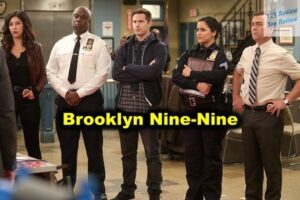Since its debut, “The Mandalorian” has captivated audiences worldwide, standing out as a groundbreaking addition to the Star Wars universe. This space Western, set in the vast expanse of the galaxy far, far away, has revived the franchise with its fresh storytelling, memorable characters, and innovative use of technology.
In this article, 123 Review explores the elements that make “The Mandalorian” a cultural phenomenon, delving into its key characters, overarching story arcs, and the broader impact it has had on the world of entertainment.
Key Characters of The Mandalorian
Din Djarin: The Mandalorian Protagonist
Din Djarin, also known simply as “Mando,” is the enigmatic central figure whose journey forms the heart of “The Mandalorian.” Portrayed by Pedro Pascal, Din is a member of the Mandalorian creed, a warrior culture with a strict code of honor. His life as a bounty hunter is marked by isolation and a rigid adherence to this code, which dictates his actions and interactions with the galaxy around him.
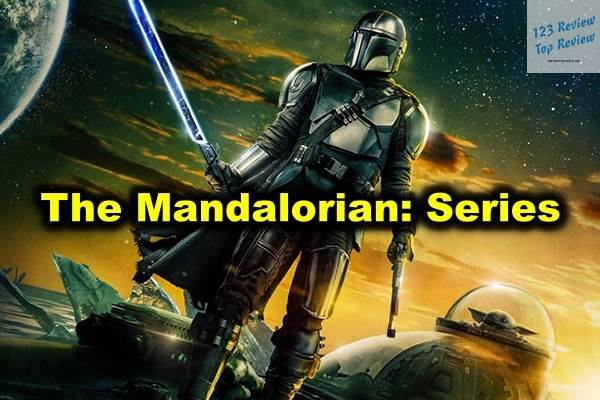
Din’s character is a blend of the stoic, lone gunslinger archetype seen in classic Westerns, and a deeply moral individual whose sense of right and wrong evolves throughout the series. The narrative arc of Din Djarin is one of transformation—from a detached, duty-bound bounty hunter to a compassionate protector willing to defy his creed for the sake of a higher calling. His journey is not just physical, but also emotional and philosophical, as he grapples with the responsibilities thrust upon him by the arrival of Grogu.
Grogu: The Child’s Impact on the Series
Grogu, known to many fans as “The Child” or “Baby Yoda,” has become an iconic figure within popular culture, transcending the series itself. Introduced in the first episode, Grogu’s adorable appearance and mysterious connection to the Force captured the hearts of viewers worldwide. However, his role in the series extends far beyond his initial cuteness—Grogu is central to the show’s emotional and narrative depth.
Grogu’s presence serves as the catalyst for Din Djarin’s transformation. Initially seen as just another bounty, Grogu quickly becomes the object of Din’s paternal instincts, leading him to make choices that put him at odds with his bounty hunting code and his fellow Mandalorians. The bond between Din and Grogu adds layers of complexity to the show, exploring themes of family, protection, and sacrifice. Grogu’s significance is further deepened by his mysterious past and his connection to the Force, raising questions about his origins and his potential role in the broader Star Wars saga.
Supporting Cast and Their Roles
The supporting cast of “The Mandalorian” is rich and diverse, each character contributing to the world-building and the progression of the main narrative. Gina Carano’s Cara Dune, a former Rebel shock trooper, adds a layer of grounded realism to the series. Her no-nonsense attitude and combat skills make her a valuable ally to Din Djarin, and her backstory as a veteran of the Galactic Civil War provides a link to the larger Star Wars lore.
Carl Weathers’ Greef Karga, initially introduced as a pragmatic guild leader, undergoes his own transformation throughout the series. His evolving relationship with Din—from employer to trusted ally—adds another dimension to the narrative, highlighting the theme of trust and loyalty in a lawless galaxy.
The enigmatic Moff Gideon, portrayed by Giancarlo Esposito, stands as one of the most formidable antagonists in the Star Wars universe. As a remnant of the defeated Empire, Gideon is ruthless, cunning, and power-hungry. His pursuit of Grogu and his possession of the Darksaber, a legendary Mandalorian weapon, make him a central figure in the unfolding conflict, representing the persistent threat of Imperial power even after the fall of the Empire.
Other notable characters include Kuiil, the wise Ugnaught voiced by Nick Nolte, whose simple wisdom and technical skills provide vital support to Din in the early episodes. The introduction of Ahsoka Tano, played by Rosario Dawson, and Bo-Katan Kryze, played by Katee Sackhoff, not only deepens the series’ connection to Star Wars: The Clone Wars and Star Wars Rebels but also expands the narrative scope of “The Mandalorian,” setting the stage for future stories within the Star Wars universe.
Story Arcs and Themes
The Journey of a Bounty Hunter
At the core of “The Mandalorian” lies the journey of Din Djarin, a lone bounty hunter navigating a galaxy rife with danger and uncertainty. The series begins with Din as a solitary figure, bound by the Mandalorian creed and the life of a bounty hunter. Each episode of the first season often follows a self-contained adventure, with Din taking on various bounties in different locations, showcasing the vast and varied galaxy of Star Wars.
However, this episodic structure is underpinned by a deeper, evolving narrative—Din’s transformation from a detached, duty-bound warrior to a caring protector. His encounter with Grogu is the pivotal moment that shifts his trajectory. What begins as a routine assignment to capture a high-value target becomes a personal quest to protect the vulnerable child, defying both his bounty hunting guild and his own code.
This journey is not just about physical survival but also about moral and emotional growth. Din begins to question the rigid rules of his creed, particularly as he forms bonds with others and faces dilemmas that force him to choose between duty and compassion. This internal conflict drives much of the tension in the series, as Din grapples with what it truly means to be a Mandalorian.
Exploring Mandalorian Culture and Traditions
“The Mandalorian” offers a deep exploration of Mandalorian culture, something that has been touched upon in other Star Wars media but never with such focus. The series sheds light on the complexities of Mandalorian identity, particularly in the post-Empire era. Through Din’s adherence to the Mandalorian code—expressed in the oft-repeated phrase “This is the Way”—viewers gain insight into the values and traditions that define this warrior culture.
The Mandalorian creed, as depicted in the series, emphasizes loyalty, honor, and the protection of one’s own, often at great personal cost. The series also explores the fractured state of the Mandalorian people, who have been scattered and decimated by the Empire’s Great Purge. This event, which saw the near-extermination of the Mandalorians, looms large over the series, influencing the actions and motivations of characters like Din, Bo-Katan Kryze, and others who seek to reclaim their heritage.
The series delves into the concept of foundlings—children taken in and raised by Mandalorians—as a central tenet of their culture. This practice is mirrored in Din’s relationship with Grogu, whom he adopts as his own, despite the child’s non-Mandalorian origins. The idea of family and belonging is a recurring theme, with the show depicting the Mandalorian way of life as one that values the collective over the individual, even as it grapples with the loss of a unified homeland.
The Conflict with Imperial Holdouts
Despite the fall of the Galactic Empire, its shadow looms large over the galaxy, and “The Mandalorian” vividly portrays the lingering threat posed by Imperial remnants. Moff Gideon and his forces represent the last vestiges of Imperial power, clinging to their authority and seeking to reclaim their lost dominance. The series depicts a galaxy in turmoil, where the New Republic struggles to establish order and Imperial holdouts continue to exert influence in the Outer Rim.
Moff Gideon’s obsession with Grogu and his use of the Darksaber—a weapon of great significance in Mandalorian history—highlight the ongoing conflict between the remnants of the Empire and those who oppose them. This struggle is not just physical but also symbolic, representing the larger battle for the soul of the galaxy. Gideon’s actions are a reminder that the defeat of the Empire was not absolute, and that its ideology and supporters continue to pose a threat.
The show also explores the power vacuum left by the Empire’s fall, as various factions and warlords vie for control in the absence of a central authority. This chaotic backdrop serves as the setting for Din Djarin’s adventures, where lawlessness and opportunism often prevail. The conflict with Imperial holdouts is a constant undercurrent, driving much of the tension and stakes in the series.
Episode Reviews and Analysis
Season 1 Episode Breakdown
The first season of “The Mandalorian” establishes the tone, style, and narrative framework of the series. Each episode is structured as a self-contained adventure, while also contributing to the broader arc of Din Djarin’s journey. The season is notable for its strong character development, world-building, and the introduction of key plot elements that would be further explored in subsequent seasons.
Chapter 1: The Mandalorian introduces Din Djarin as a skilled bounty hunter operating on the fringes of the galaxy. The episode sets the stage with its gritty, Western-inspired atmosphere, culminating in the reveal of Grogu, a moment that instantly captivated audiences and set the central narrative in motion. Chapter 3: The Sin marks a turning point in the series, as Din chooses to rescue Grogu from the clutches of the Imperial remnants, defying the bounty hunter guild and breaking with his code. This episode is significant for its intense action sequences and the moral dilemmas faced by Din, highlighting the complexity of his character. Chapter 8: Redemption serves as the season finale, delivering a high-stakes showdown between Din, his allies, and Moff Gideon’s forces. The episode is notable for its emotional depth, as Din’s past is revealed and he fully embraces his role as Grogu’s protector. The introduction of the Darksaber in the final moments sets the stage for future conflicts and deepens the series’ connection to Mandalorian lore.
Season 2 Episode Breakdown
The second season of “The Mandalorian” expands the scope of the series, introducing new characters and deepening the connections to the wider Star Wars universe. The season is marked by its exploration of Mandalorian culture, the origins of Grogu, and the growing threat posed by Moff Gideon.
Chapter 9: The Marshal kicks off the season with a thrilling adventure in the desert town of Mos Pelgo, where Din teams up with Cobb Vanth, a local marshal, to take down a massive Krayt dragon. This episode exemplifies the series’ ability to blend standalone stories with the overarching narrative, while also introducing elements from the Star Wars expanded universe. Chapter 13: The Jedi is a standout episode, featuring the live-action debut of Ahsoka Tano. Directed by Dave Filoni, this episode is rich in lore, revealing Grogu’s name and his connection to the Jedi. Ahsoka’s refusal to train Grogu due to his attachment to Din adds a layer of complexity to the story, highlighting the challenges of balancing personal bonds with greater responsibilities. Chapter 16: The Rescue serves as the season finale and is one of the most impactful episodes in the series. The episode features an epic rescue mission, culminating in the surprise appearance of Luke Skywalker, who arrives to take Grogu for Jedi training. This moment not only connects “The Mandalorian” to the original Star Wars trilogy but also marks a poignant farewell between Din and Grogu, underscoring the emotional heart of the series.
Impact on the Star Wars Franchise
Reviving the Franchise
“The Mandalorian” has played a pivotal role in revitalizing the Star Wars franchise, particularly in the wake of the mixed reception to the sequel trilogy. The series’ success has demonstrated the viability of Star Wars on the small screen, paving the way for a new era of Star Wars television content. Its blend of familiar Star Wars elements with fresh storytelling and innovative technology has reinvigorated the franchise, attracting both longtime fans and new audiences.
The show’s use of cutting-edge technology, particularly the StageCraft virtual production process, has set new standards for television production. This technology, which uses large LED screens to create immersive environments in real-time, has allowed “The Mandalorian” to achieve cinematic quality on a television budget, contributing to its critical and commercial success.
Expanding the Universe
“The Mandalorian” has also expanded the Star Wars universe, introducing new characters, planets, and storylines that have enriched the franchise’s lore. The series has served as a launching pad for several spin-offs, including “The Book of Boba Fett,” “Ahsoka,” and “Rangers of the New Republic,” each of which will further explore different aspects of the Star Wars galaxy.
The show’s emphasis on Mandalorian culture and its deep connections to Star Wars: The Clone Wars and Star Wars Rebels has also strengthened the ties between different parts of the Star Wars canon. By bringing characters like Ahsoka Tano and Bo-Katan Kryze into live-action, “The Mandalorian” has bridged the gap between animated and live-action storytelling, creating a more cohesive and interconnected Star Wars universe.
Cultural Phenomenon and Legacy
Beyond its impact on the Star Wars franchise, “The Mandalorian” has become a cultural phenomenon in its own right. Grogu, in particular, has become a global icon, inspiring countless memes, merchandise, and fan art. The character’s popularity has transcended the show, making him one of the most recognizable figures in contemporary pop culture.
The series has also been praised for its diverse cast and its ability to tell stories that resonate with a wide audience. Its blend of action, humor, and emotional depth has made it a hit with viewers of all ages, and its episodic structure has allowed for a variety of storytelling styles, from intense action sequences to quieter, character-driven moments.
As “The Mandalorian” continues to shape the future of Star Wars, its legacy is already evident. The show has not only revitalized the franchise but also set a new standard for what Star Wars can be in the 21st century—bold, innovative, and deeply connected to its roots while pushing the boundaries of storytelling.
Conclusion
“The Mandalorian” has carved out its place in the Star Wars pantheon, becoming a touchstone for a new generation of fans. With its rich characters, compelling story arcs, and innovative production techniques, the series has not only revitalized the Star Wars franchise but also set a new standard for television storytelling. As the series moves forward, its influence on the Star Wars universe and popular culture at large will undoubtedly continue to grow, making it a key chapter in the ongoing saga of the galaxy far, far away.

